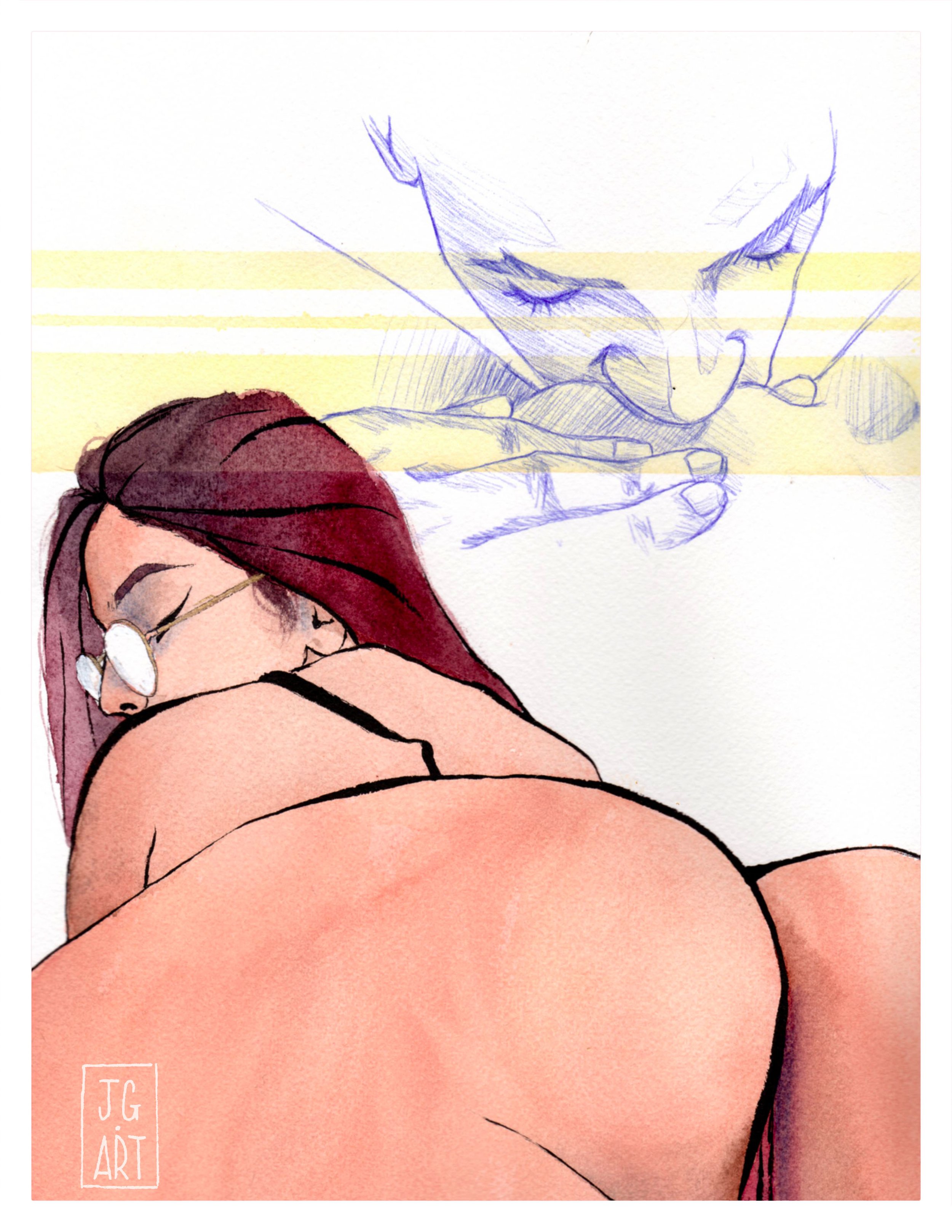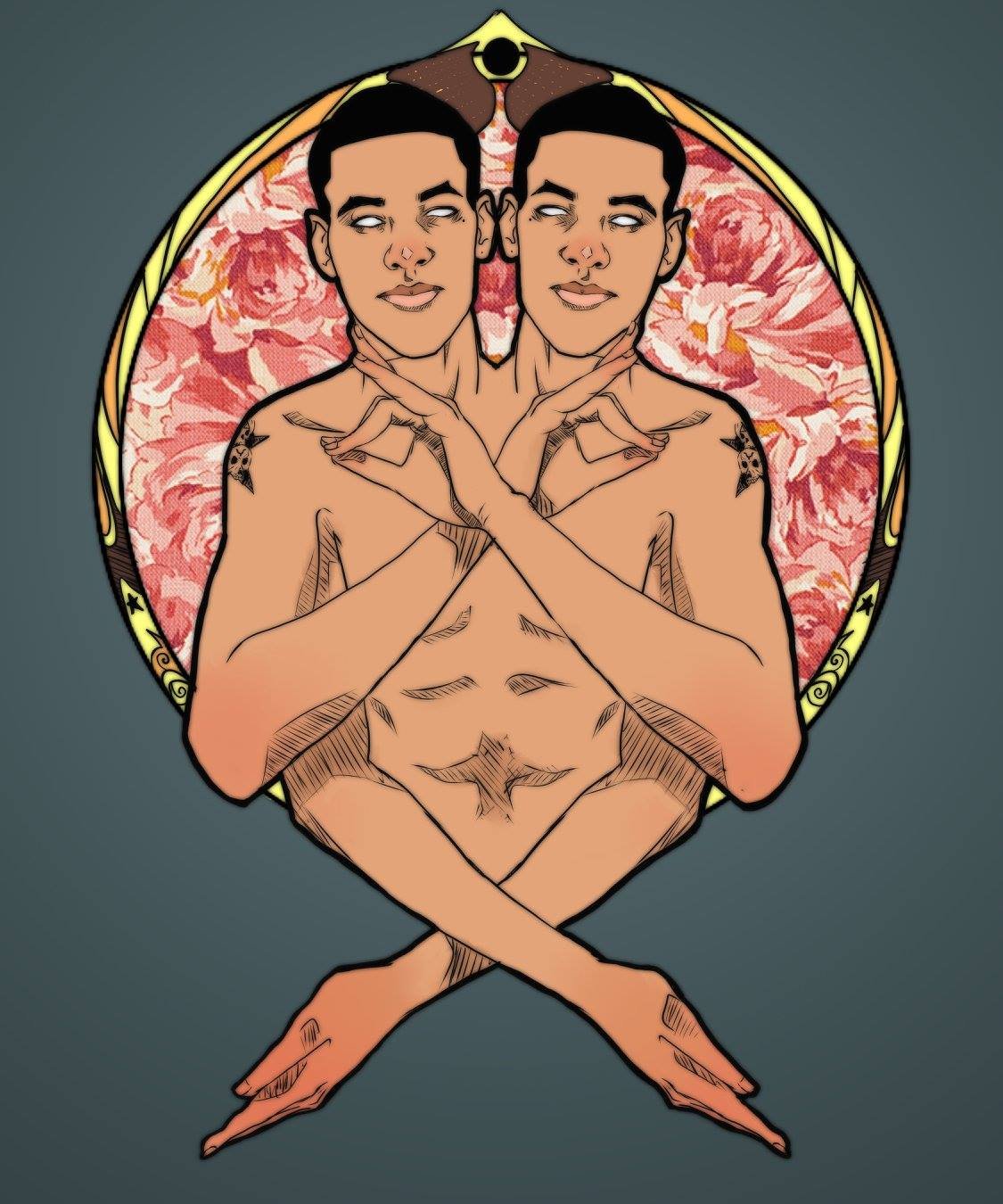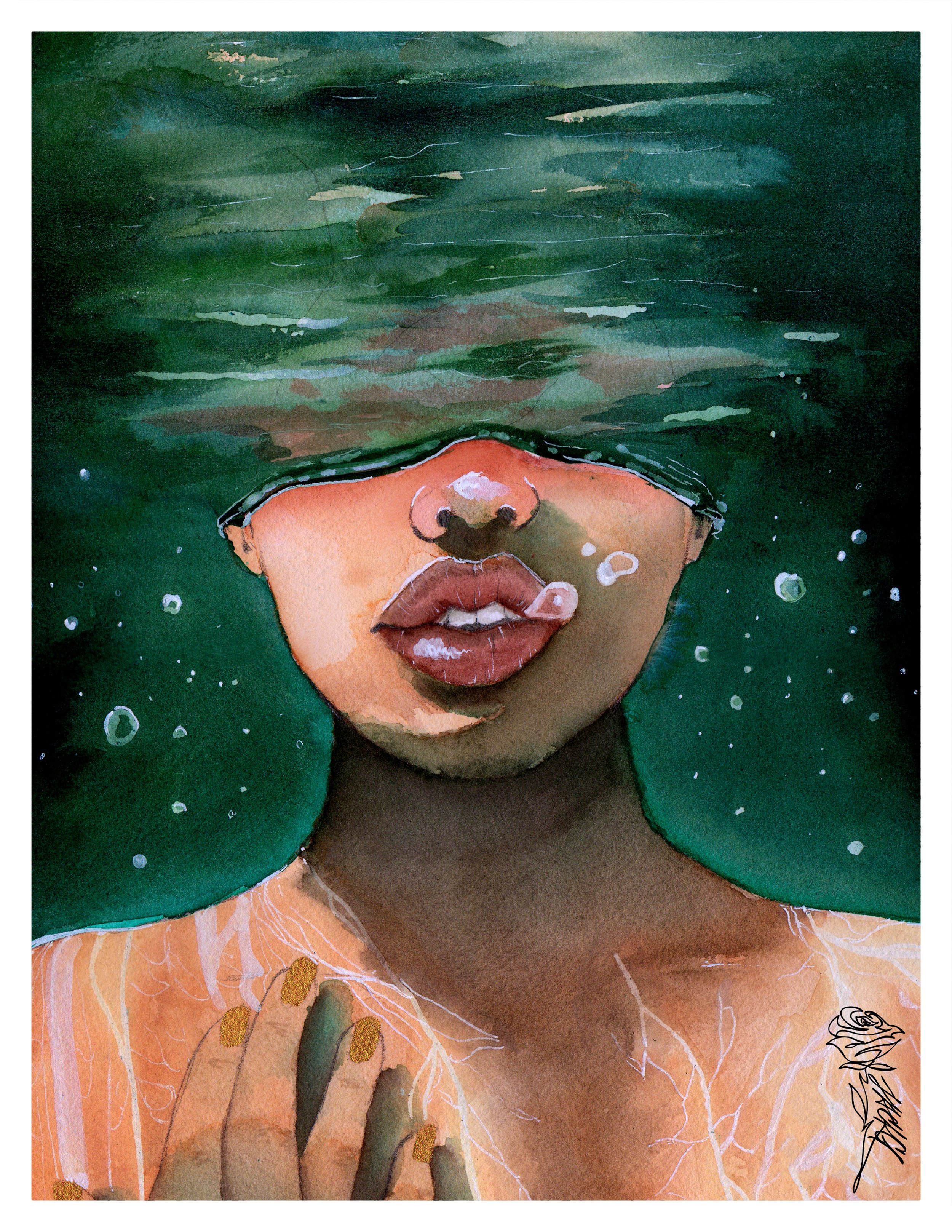Art is more than just a creative outlet—it’s the core of who I am, the language I use to connect with the world and with myself. Every piece I create holds a purpose, a fragment of my soul laid bare for others to see. It’s intimacy captured in color, a rebellion against societal norms, a mirror reflecting self-love, and a means to leave my mark on eternity. These purposes drive me to paint, to create, to pour every ounce of my being into my work. Through my art, I explore, celebrate, and share the truths that define my existence. This is why I paint. This is The Purpose.
The Purpose: Act of Intimacy
Creativity and intimacy are deeply intertwined, each sparking the same fire within us. For me, art becomes an extension of touch—a brushstroke carrying the same intention as lips on skin. My desire for the subject drives my hand, the paintbrush becoming a stand-in for the closeness I crave. Every curve, fold, and blemish becomes an object of fascination, a study in devotion. When my hands cannot reach the flesh they long for, they create instead. My art mirrors the same goal I have in intimacy: to make someone feel desired, seen, and fulfilled. It’s an act of seduction through color and shape, an unspoken love letter. When words fail me, my creations speak, revealing every longing, every ache. Painting is not just an act of creation—it’s the purest form of making love.
The Purpose: Normalize the Taboo
I’ve always seen the world differently. Whether from the open-mindedness instilled by my upbringing or the unique lens of my autism, I’ve never understood the limits society places on what’s “acceptable.” Nudity. Desire. Sex. These are primal, ancient truths of humanity, yet we’ve been conditioned to hide and fear them. My art exists to challenge that. To strip away shame and censorship and reveal the beauty in what is often called obscene. By painting the intimate and the forbidden, I hold a mirror to humanity, asking us to confront our discomfort and see it as art. The more we look, the less we shy away. The more we admire, the less we judge. I want my art to normalize what’s natural, celebrate what’s condemned, and show the beauty in what we were once told to call ugly.
The Purpose: Become Immortal
They say you don’t truly die until the last memory of you fades away. That idea terrifies me—the thought of disappearing completely, forgotten by time. But art is my answer to that fear. Through my creations, I become eternal. I want my name to echo through generations, my work living in homes, whispered about, passed down. I want the emotions my art evokes to resonate long after I’m gone, weaving themselves into the lives of people I’ll never meet. My brushstrokes are my legacy, my immortality. Even when I draw my final breath, Jack Ghostel will continue to exist. Through my art, I won’t just live—I’ll transcend.
The Purpose: Influence Confidence
Years ago, a friend told me my art changed how she saw herself. She told me she felt beautiful—like art. That moment is etched in my mind, shaping my purpose as an artist. I paint to inspire self-love and confidence, to help people see the beauty in their bodies. My work reflects the divinity in each person, stripping away insecurities and replacing them with awe and appreciation. When someone looks at a piece of my art and sees themselves in it, I want them to feel proud, powerful, and divine. Even if I never achieve fame, knowing my work has uplifted someone’s self-image is enough. My art exists as a mirror—not one that distorts, but one that celebrates the truth. Through my creations, I want people to see the gods they truly are.
















































































































